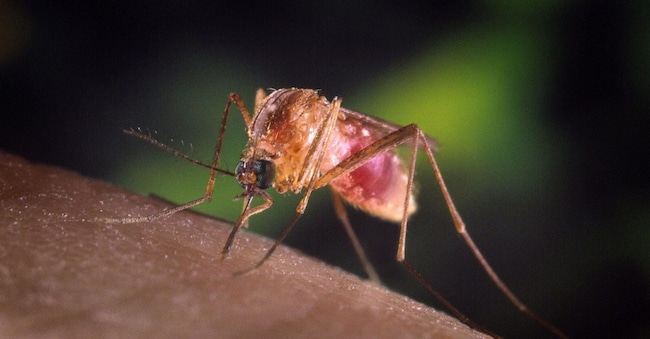West Nile, virologist Parrella: "The situation is under control, but there's no cure; the most vulnerable must be protected."


West Nile virus has returned to circulate in Italy, and is doing so in a similar fashion to previous years. Recent deaths—seven officially reported in recent weeks, in Lazio, Campania, and Piedmont—have brought to public attention an infectious disease that is sometimes overlooked but far from marginal in terms of public health.
For Roberto Parrella , president of the Italian Society of Infectious and Tropical Diseases (SIMIT) and director of the Infectious Diseases Unit at Cotugno Hospital in Naples, who is monitoring several patients infected with the virus, the growing spread of West Nile in Italy "should not cause alarm, but requires responsibility and awareness." "It's no longer time to consider these infections exotic or rare," he explains, "and the challenge of arboviruses, amplified by climate change and the migratory movements of birds and insects, must be addressed with modern tools and a multidisciplinary approach."
Infections are spreading like wildfire. What's causing the virus to spread?
The virus is transmitted by the common mosquito of the Culex pipiens genus, now widespread in our country and favored by climate change, which contributes to extending the vector's activity season and increasing its density. The disease caused by the West Nile virus—known as West Nile Disease—is mostly asymptomatic (approximately 80% of cases), but in a significant proportion of patients it can manifest with flu-like symptoms, and in less than 1% of cases it can progress to severe neuroinvasive forms, with encephalitis, paralysis, and sometimes fatal outcomes, especially in the elderly and frail.
Citizens' concerns are also growing. Are experts alarmed?
The situation is under control, but we cannot afford to underestimate the situation. As SIMIT, we believe it is essential to maintain high levels of vigilance from institutions, the medical profession, and the public. An effective approach to this infection is based on three pillars: epidemiological surveillance, timely diagnosis, and environmental prevention.
How to recognize symptoms in suspected cases?
West Nile virus is not transmitted from person to person: the only vector is the infected mosquito, which in turn becomes infected primarily by feeding on the blood of migratory birds. Once infected, humans are a "dead-end host," meaning they do not participate in the epidemiological chain.
Diagnosis, therefore, requires close clinical attention. Symptoms, initially flu-like—fever, headache, rash, muscle aches—can progress to tremors, confusion, drowsiness, and neurological disorders. Early suspicion of the disease is crucial, especially in emergency rooms and by general practitioners. Most infections escape diagnosis precisely because they are mild or asymptomatic: severe cases are just the tip of the iceberg.
Is there a specific cure for West Nile virus?
Currently, there are no specific antivirals approved for West Nile. Treatment remains symptomatic and supportive, with the use of immunoglobulins or experimental antivirals in selected cases. Therefore, primary prevention is our first and most effective line of defense.
Are the prevention and surveillance plans developed by the Ministry and Regions sufficient?
The Ministry of Health's circular of July 21, strengthening the clinical and environmental surveillance network, is a step in the right direction. Collaboration between health authorities, regional infectious disease networks, and local governments is essential for monitoring the evolution of the virus and responding rapidly to outbreaks. The infectious disease network—strengthened after the COVID-19 emergency—is already active, and thanks to the awareness of colleagues, it was possible to diagnose the first cases promptly, demonstrating the importance of ongoing training for healthcare workers.
There's growing talk of One Health, the interconnected health of people, animals, and the environment. How important is collaboration between different sectors to address global health challenges?
Alongside clinical surveillance, systematic and comprehensive environmental prevention is essential. Disinfestations, the use of larvicides and adulticides, and entomological monitoring are essential tools. Municipalities must intervene in high-risk areas—wetlands, ponds, and green spaces—but citizens must also do their part. Eliminating stagnant water in gardens, plant pots, and uncovered containers, using mosquito nets and repellents, and protecting homes: these are simple but effective measures.
We are facing an evolving scenario: what is the impact of climate on the spread of arboviruses?
The return of West Nile is not an isolated incident. In recent years, we have witnessed the emergence, including in Italy, of other mosquito-borne viruses, such as dengue, chikungunya, Zika, and Usutu. Some of these were once considered exclusively tropical. Today, due to changing climatic and environmental conditions, our country has become a favorable habitat. We must therefore broaden our focus to the entire family of arboviruses, implementing integrated prevention strategies that also include veterinary surveillance and the control of sentinel animals, such as horses and wild birds.
News and insights on political, economic, and financial events.
Sign upilsole24ore




